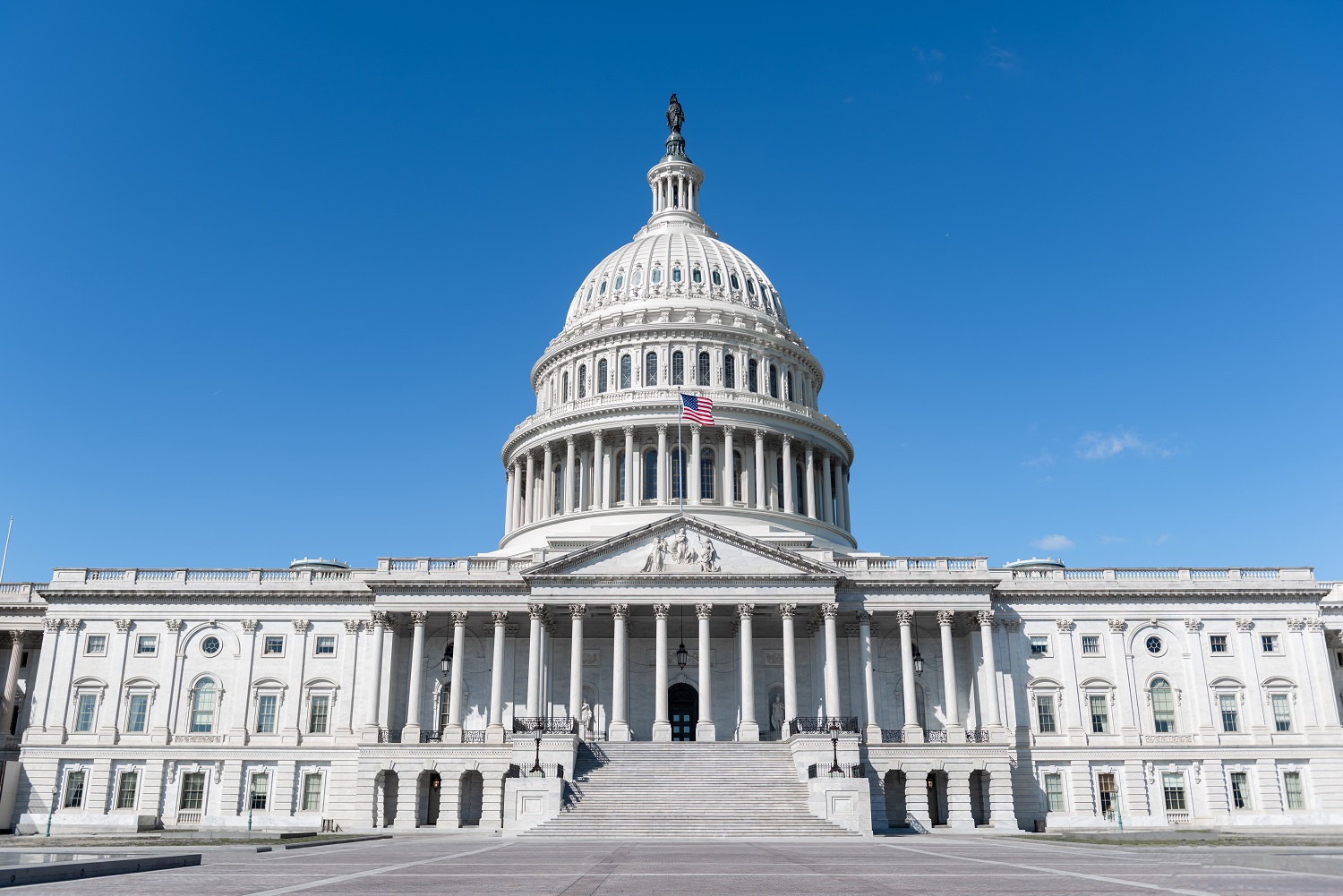Recommended
The US Development Policy Initiative at the Center for Global Development launched the Foreign Assistance Agency Briefs for a simple reason. Foreign assistance is in the spotlight, slated for significant budget cuts during the Trump administration, yet it remains poorly understood. The series of five briefs contained here provides a snapshot of the primary US foreign assistance agencies. And while these agencies implement nearly 90 percent of US development and humanitarian assistance, there are twenty agencies in total that implement aid-related programs.[1] Additionally, the United States has the Overseas Private Investment Corporation (OPIC), which does not manage foreign assistance funds but uses other tools to catalyze private investment in developing countries.
The five agencies are:
- United States Agency for International Development (USAID)
- Millennium Challenge Corporation (MCC)
- Overseas Private Investment Corporation (OPIC)
- United States Department of State
- United States Department of Treasury
While the American public believes its government spends 28 percent of the federal budget on foreign assistance programs,[3] in reality, even under the most expansive definition, aid accounts for less than 1 percent of the budget.
Three Essential Questions for US Foreign Assistance
Beyond getting the numbers right, there is a need to present a clear picture of US foreign assistance and answer essential questions of mission, effectiveness, and reform.
- What are we trying to achieve through foreign assistance?
- How well are we doing it?
- How could we deliver foreign assistance better?
What are we trying to achieve through foreign assistance?
US foreign assistance lacks a basic mission statement. After the terrorist attacks of 9/11, the language of security dominated the foreign assistance lexicon. So much so that both Republican and Democratic administrations now routinely describe foreign aid as a “forward defense,” “vital to our national security,” and the “soft power” that sits alongside the hard power of our military.[5] Some critics argue this rationale for foreign aid is problematic.[6]
One clear shortcoming of the dominant “foreign assistance as national security” mission statement is that it crowds out a deeper understanding of the various objectives driving a diverse array of activities. In fact, “assistance” alone is misleading. A better collection of verbs would include “invest,” “partner,” and “mobilize.”
Increasingly, the motivation of US foreign assistance is not simply to provide a direct handout, but to engage with multiple actors to produce benefits that flow in both directions. Responding to an Ebola outbreak in West Africa or Zika in Latin America requires direct assistance to countries in afflicted regions, but it also relies on partnerships with experts in those countries and around the world. The benefits that come when a pandemic is contained are indifferent to national borders, just as the threat of those pandemics is.
Similarly, investments by US firms supported by OPIC aim to foster global growth. There is a direct benefit to US businesses at home, but the agency also contributes to the longer-term objective of strengthening economies in some of the world’s poorest countries, helping them become less aid dependent, and ultimately contributing to an expanding global economy that creates new opportunities for US exporters and consumers. Again, the benefits flow in both directions.
There is a wide range of objectives associated with the activities of each of the primary aid agencies described in this briefing series, which are ultimately motivated by the desire to promote a more prosperous and stable world and, consequently, to promote a more prosperous and secure America. These objectives can take the form of private sector investment, promoting access to electricity, responding to natural disasters, or investing in disease eradication, among many other endeavors.
How well are we doing it?
Given the diversity of foreign assistance activities and objectives, “does aid work?” is too simple a question to pose and too hard a question to answer with a single judgment. Economists tend to answer the question by measuring the impact of aid on economic growth. On this question, economic studies yield mixed findings, though most recent studies suggest aid has a positive effect on growth.[7]
Beyond growth, there is stronger evidence of aid’s contributions to development outcomes in certain sectors—for instance, in lives saved through health initiatives.[8] Below are specific examples of aid’s contributions across a number of sectors:
- PEPFAR is supporting life-saving antiretroviral treatment (ART) for nearly 11.5 million people, and has prevented nearly 2 million babies from being born with HIV.[9]
- The President’s Malaria Initiative has contributed to the global decline in malaria that has saved over 6 million lives since 2000.[10]
- In 2015, the Feed the Future Initiative helped boost producer incomes by more than $800 million, and helped more than 9 million smallholder farmers and other producers adopt practices to improve their incomes and nutrition. [11]
- USAID provided life-saving support to 109 million victims of humanitarian emergencies around the world.[12]
Of course, not all aid programs achieve their intended objectives. And for many programs, we simply do not know whether they were effective, though a commitment to conduct more and better program evaluations has started to close this gap. Ultimately, there is not enough evidence to understand the systematic impact of US foreign assistance, however, we can still reasonably consider how our national interests benefit from the United States’ foreign assistance investments. For instance, US foreign assistance:
- Addresses health threats: The United States is a major supporter of outbreak detection and response, and helps stop the spread of deadly and debilitating diseases across borders.
- Creates stronger trade partners: 51 percent of American exports went to emerging and developing economies in 2015.[13] Strengthening these economies further can enhance markets for US goods and services.
- Molds the multilateral agenda in our favor: Contributions to the World Bank and other multilateral development banks have enabled the United States to play a significant leadership role, shaping the direction of institutions’ policies and priorities.
Would compromising any of these outcomes better serve our national interests? It is hard to imagine how that answer could be yes.
How could we deliver foreign assistance better?
As we seek to better understand the outcomes and impact of our foreign assistance, we must ask the important question: How do we make these programs better and more effective?
If today’s policymakers can avoid politically-motivated attacks on foreign aid, they will find no shortage of expert views on appropriate reforms. Unsurprisingly, not all these views are aligned, and some are directly at odds.
The very mission of the Center for Global Development is squarely aimed at improving the United States and other major donor countries’ policies and practices—including those that govern foreign assistance—to reduce global poverty and inequality. Over the Center’s fifteen-year history, CGD researchers have produced a wellspring of ideas for reforming foreign assistance—and development policy more broadly.
CGD delivers its experts’ current thinking on reform and innovation for US policymakers in the form of The White House and the World briefing book. The 2016 edition contains a range of proposals aimed at institutional reform - a USAID top-to-bottom review, innovative non-aid initiatives in areas like migration and trade, and ideas on how best to promote US leadership in international organizations like the World Bank.
New development initiatives and reforms have been a hallmark of Republican and Democratic administrations alike when it comes to foreign assistance programs. It should be no less so for the current administration and Congress. We hope the Foreign Assistance Agency Briefs and The White House and the World series can serve as helpful resources for this important work.
For additional reading and resources, there are other leading research and advocacy organizations that have developed detailed reform agendas that deserve consideration. We have assembled a selective foreign assistance “reform” bibliography here:
- The Center for Global Development: The White House and the World
- George Ingram, Brookings Institution: Aid Effectiveness: Reform in the New Administration and Congress
- Daniel Runde, Center for Strategic and International Studies: Absolutely Reorganize, But Don't Break Foreign Assistance
- Modernizing Foreign Assistance Network. New Era for Reform: Proposals for 2017
- Consensus for Development Reform: Consensus for Development Reform Policy
Endnotes
[1] US foreign assistance is divided into economic assistance (foreign aid with a development or humanitarian objective) and military assistance (foreign aid for the benefit of recipient government armed forces). The Foreign Assistance Agency Briefs focus exclusively on economic assistance.
[2] Data refers to FY2015 disbursements of economic assistance by implementing agency. Source: USAID, “Foreign Aid Explorer: The Official Record of U.S. Foreign Aid,” 2017, https://explorer.usaid.gov/data.html.
[3] The Kaiser Family Foundation, “2013 Survey of Americans on the U.S. Role in Global Health” (The Kaiser Family Foundation, November 2013), http://kff.org/global-health-policy/poll-finding/2013-survey-of-americans-on-the-u-s-role-in-global-health/.
[4] Office of Management and Budget, “Historical Tables,” The White House, 2017, https://obamawhitehouse.archives.gov/node/18060.
[5] Sean Hansen, “Republicans and Democrats Agree: Foreign Aid Cuts Would Hurt U.S. National Security,” U.S. Global Leadership Coalition, (March 15, 2017), http://www.usglc.org/2017/03/15/republicans-and-democrats-agree-foreign-aid-cuts-would-hurt-u-s-national-security/; Lawrence Summers, “The Future of Aid for Health,” Financial Times, December 1, 2016, http://blogs.ft.com/larry-summers/2016/12/01/the-future-of-aid-for-health/.
[6] William Easterly, “This Common Argument for U.S. Foreign Aid Is Actually Quite Xenophobic,” The Washington Post, March 31, 2017, https://www.washingtonpost.com/news/global-opinions/wp/2017/03/31/this-common-argument-for-u-s-foreign-aid-is-actually-quite-xenophobic/.
[7] Channing Arndt, Sam Jones, and Finn Tarp, “What Is the Aggregate Economic Rate of Return to Foreign Aid?,” WIDER Working Paper (Helsinki, Finland: UNU-WIDER, 2014), https://www.wider.unu.edu/publication/what-aggregate-economic-rate-return-foreign-aid-0; Jonathan Glennie and Andy Sumner, “The $138.5 Billion Question: When Does Foreign Aid Work (and When Doesn’t It)?,” Policy Paper (Washington, DC: Center for Global Development, November 2014), /sites/default/files/CGD-Policy-Paper-49-Glennie-Sumner-When-Does-Foreign-Aid-Work.pdf.
[8] Amanda Glassman and Miriam Temin, Millions Saved: New Cases of Proven Success in Global Health (Baltimore, MD: Center for Global Development, 2016).
[9] PEPFAR, “PEPFAR Latest Global Results, 2016,” Fact Sheet (U.S. Department of State, 2016), https://www.pepfar.gov/documents/organization/264882.pdf.
[10] President’s Malaria Initiative, “PMI by the Numbers,” July 2016, https://www.pmi.gov/docs/default-source/default-document-library/pmi-reports/pmi-by-the-numbers.pdf?sfvrsn=16.
[11] Feed the Future, “2016 Feed the Future Progress Report,” 2016, https://feedthefuture.gov/sites/default/files/resource/files/2016%20Feed%20the%20Future%20Progress%20Report_0.pdf.
[12] USAID and U.S. Department of State, “FY2015 Annual Performance Report and FY2017 Annual Performance Plan” (USAID, 2015), https://www.usaid.gov/sites/default/files/documents/1870/State-USAID_FY2017APP_FY2015APR.pdf.
[13] World Integrated Trade Solution (WITS) Database, 2015, http://wits.worldbank.org/.
Rights & Permissions
You may use and disseminate CGD’s publications under these conditions.





